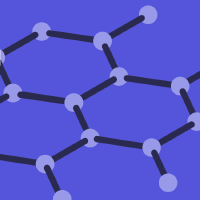Topic Editors




Preparation and Application of Polymer Nanocomposites

Topic Information
Dear Colleagues,
Polymer nanocomposites, which combine the unique physicochemical properties of nanofillers and the flexibility of polymers, have played a significant role in many applications, including building supplies, batteries, thermally and electrically conductive materials, automobiles, electromagnetic interference (EMI) shielding materials, leisure sports and marine systems. They can produce billions of dollars in output values annually. Advanced polymer nanocomposites with high tensile strength, high modulus and substantially superior properties have been attracting increasing attention in the field of aircraft, aerospace, civil engineering and construction, especially in flexible wearable electronics. This topic focuses on the preparation and applications of new polymer nanocomposites, aiming to provide a platform to seek the new functionality of polymer nanocomposites, broadening their application fields in the future.
Dr. Hongbo Gu
Dr. Zilong Deng
Dr. Donglu Fang
Prof. Dr. Xianhu Liu
Dr. Kai Sun
Dr. Hu Liu
Topic Editors
Keywords
- polymer nanocomposites
- advanced materials
- functionalization
- thermal and electrical conductivity
- flexible wearable
- electromagnetic interference (EMI) shielding
Participating Journals
| Journal Name | Impact Factor | CiteScore | Launched Year | First Decision (median) | APC | |
|---|---|---|---|---|---|---|

Applied Nano
|
- | - | 2020 | 25.4 Days | CHF 1000 | Submit |

Materials
|
3.1 | 5.8 | 2008 | 13.9 Days | CHF 2600 | Submit |

Nanomaterials
|
4.4 | 8.5 | 2010 | 14.1 Days | CHF 2900 | Submit |

Polymers
|
4.7 | 8.0 | 2009 | 14.5 Days | CHF 2700 | Submit |

Solids
|
2.4 | 3.4 | 2020 | 27.5 Days | CHF 1000 | Submit |

Molecules
|
4.2 | 7.4 | 1996 | 15.1 Days | CHF 2700 | Submit |

MDPI Topics is cooperating with Preprints.org and has built a direct connection between MDPI journals and Preprints.org. Authors are encouraged to enjoy the benefits by posting a preprint at Preprints.org prior to publication:
- Immediately share your ideas ahead of publication and establish your research priority;
- Protect your idea from being stolen with this time-stamped preprint article;
- Enhance the exposure and impact of your research;
- Receive feedback from your peers in advance;
- Have it indexed in Web of Science (Preprint Citation Index), Google Scholar, Crossref, SHARE, PrePubMed, Scilit and Europe PMC.



